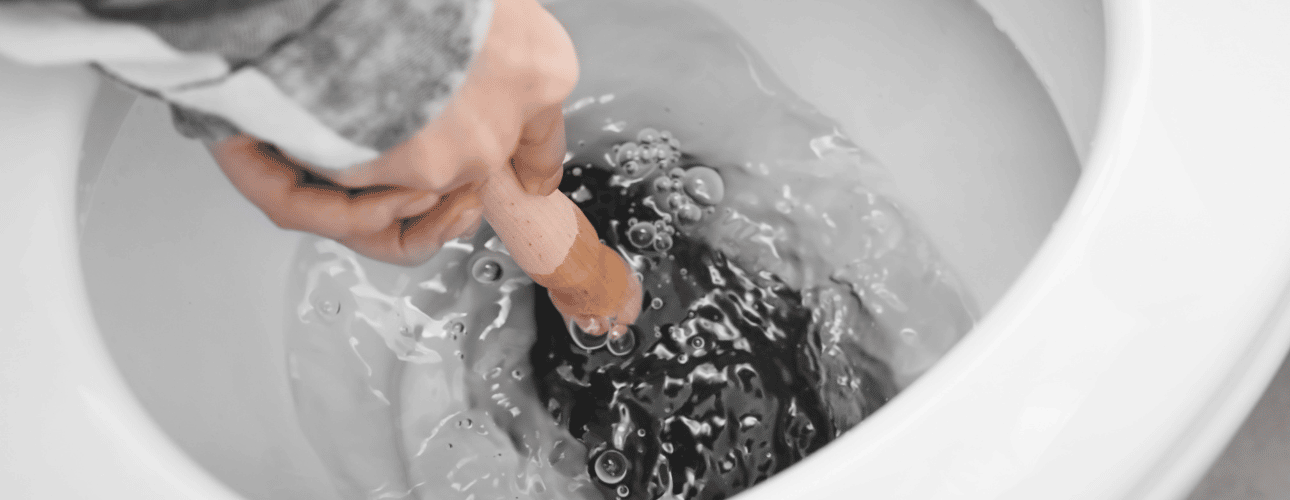Why Your Toilet Keeps Clogging: Causes And Solutions

How To Fix Your Frozen Air Conditioner Line
January 3, 2023
Common AC Problems And Solutions
March 10, 2023There are several reasons why your toilet keeps clogging. The issue may be caused by problems with your drain lines, what you’re flushing down, or the toilet itself. Here’s why your toilet keeps clogging and some solutions to mitigate the issue.
Reasons Your Toilet Keeps Clogging
If your toilet clogs frequently, something isn’t right. Typically, the issue concerns your plumbing, your toilet, or what goes down. Some common causes of a clogged toilet include:
- Your toilet is a low-flow, older model
- The toilet trap is clogged
- The toilet vent is blocked
- The sewer line is clogged
Below we will discuss these causes in-depth and provide solutions.

Your Toilet Is A Low Flow, Older Model
Older homes are sometimes equipped with low-flow, older-model toilets. These toilets may be the reason for clogging. Older models do not have the pressure new toilets have. This pressure is needed to push material consistently through the drain and trap. If there is a low flushing pressure, materials are left behind, resulting in a clogged toilet.
Solution:
Replacing your older toilet is one of the simplest ways to eliminate the headache of constant clogs. If replacement is not an option, reducing the amount of toilet paper and being mindful of what you flush is a way to prevent future clogging.
Typically produced in the mid-1990s, older toilets are more prone to clogging issues. You can make upgrades with low-flow fixtures throughout your home to increase the pressure and reduce constant clogging. A professional can also help you select a new toilet that conserves more water and install them in your home.
The Toilet Trap Is Clogged
You may be familiar with a sink’s P-trap; however, toilets also have a trap that is an S-shape. This trap sits between the toilet bowl and the drain line. The purpose of this S-trap is to catch objects and prevent them from traveling to the drain line and causing clogging.
This area is a common place where items get stuck. Excess toilet paper and waste can become logged in the toilet trap. When the toilet trap accumulates a significant mass, flushed new materials are less likely to be caught, resulting in a clog.
Solution:
If there is a clog in the toilet vent, plunging the toilet will assist the trapped materials in moving along. If plunging does not work, using a toilet auger is another option. Insert the toilet auger into the drain, and move it deeper until you hit the resistance. A clog in the toilet trap is most likely the problem if the resistance is beyond the toilet drain. You can turn the auger in a circular motion to break up the blockage and pull the remaining material out of the drain.
The Toilet Vent Is Blocked
Toilets are connected to a vent that typically exists through your home’s roof. This vent allows air from the outside to enter the plumbing system, increasing the flushing pressure. When this vent becomes blocked, the toilet will lose pressure. Poor pressure causes clogging more frequently, and they become a consistent problem.
Solution:
The toilet vent is most commonly blocked from the opening on the roof or the inside of the home to the sewer line. The first step to diagnosing this issue is to check the roof.
- Use a ladder to climb onto the roof of your home safely. Locate the toilet vent, which penetrated through the roof.
- Check the vent to ensure no debris has entered, and remove any that you can touch.
- Using a garden hose, send water down the vent, clearing most of the blockage
- The blockage has not moved if the water comes back out of the vent opening.
- Use an auger to break through the buildup
- Use more water to ensure the toilet vent is clear.
The Sewer Line Is Clogged
Some clogs may be trapped in your home’s main sewer line. These clogs can cause issues with drainage in the entire house. Outdoor sources such as sewer line infiltrations, sewer line breaks, and tree root penetration are sometimes the source of the problem. These issues impact your sewer’s ability to remove waste from your home.
Solution:
This issue cannot be resolved on your own; the help of a plumber is required. If this problem is ignored, it can cause more damage to your home.
Call a professional if you cannot identify why your toilet keeps clogging. There are many solutions you can diagnose, but ensuring the blockage is removed can prevent further issues from occurring. Living Water offers plumbing services; visit our website to learn more.

